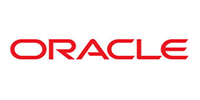Description
This course is intended for Oracle 11g administrators having to migrate the DBMS to Oracle 12c. Among the main points covered, trainees will see the new shared architecture, as well as the improvements made in terms of security, manageability and performance.
Who is this training for ?
For whom ?
This course is aimed at Oracle 11g database administrators.
Prerequisites
Training objectives
Training program
- Shared architecture
- Root container (CDB).
- Inserted containers (PDB).
- Triggers on inserted database.
- Log management, flashback and tablespaces.
- Manage schemas, privileges and roles.
- Exercise: Create and manage a shared architecture.
- Backup and Restore
- The new privileges.
- The use of SQL in RMAN.
- Transport between platforms.
- Backup and flashback.
- Duplicate a database.
- Exercise: Backup/restore inserted databases.
- Automatic data optimization
- OAD levels.
- Automatic moving and compression.
- Compression types and strategies.
- The solution
- New temporal data type in SQL.
- Exercise: rnSet up the policy online movement and compression of data files.
- Audit, monitoring, diagnosis
- Setting up and managing the unified audit.
- Define and monitor a database operation.
- Define the dimensions of the overall load .
- ADR repository related enhancements.
- Handle resources and blocked requests.
- Changes to shutdown procedures.
- Exercise: Implement an audit strategy as well as real-time diagnosis.
- Privileges
- Implement segregation of duties.
- Use database privilege scanning.
- Ombre protection.
- Security policies masking.
- Exercise: Manage privileges and implement a data masking strategy.
- The diagrams
- Schema editing and synchronization.
- The data comparison flow.
- Index on the same set of columns.
- Create a table with invisible columns.
- Advanced row compression.
- Redefinition and inline modifications.
- Partitioned tables.
- Exercise: Comparison of several database diagrams.
- SQL queries
- The new data types.
- The row limitation clause.
- Handling adaptive execution plans.
- Improvements in collecting statistics.
- Exercise: Perform a statistics collection.






